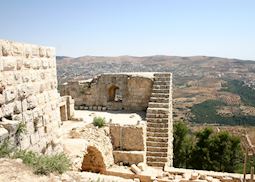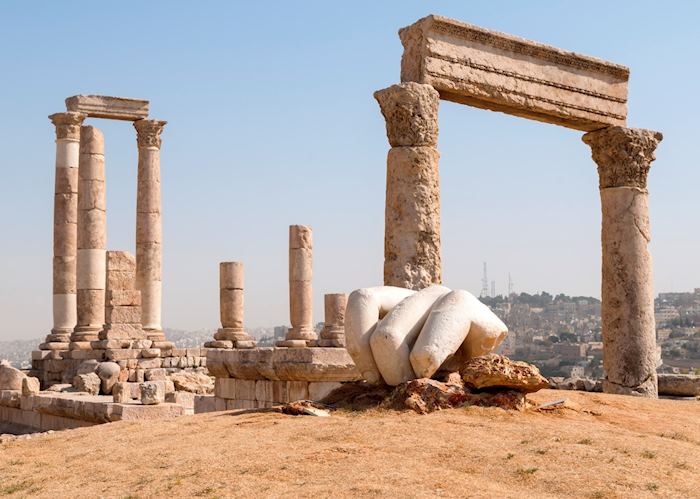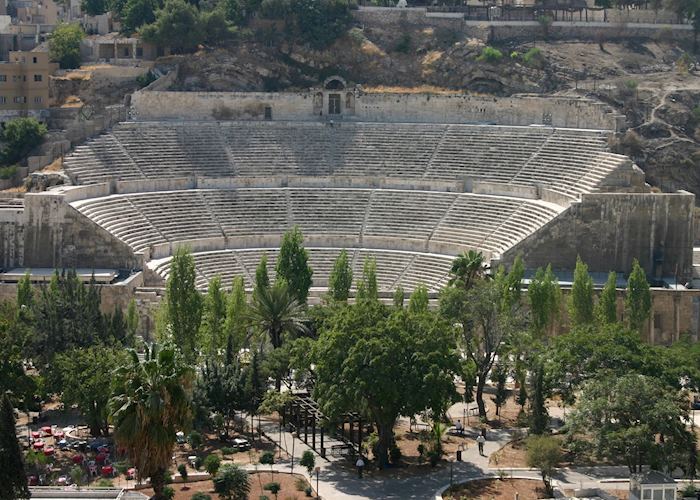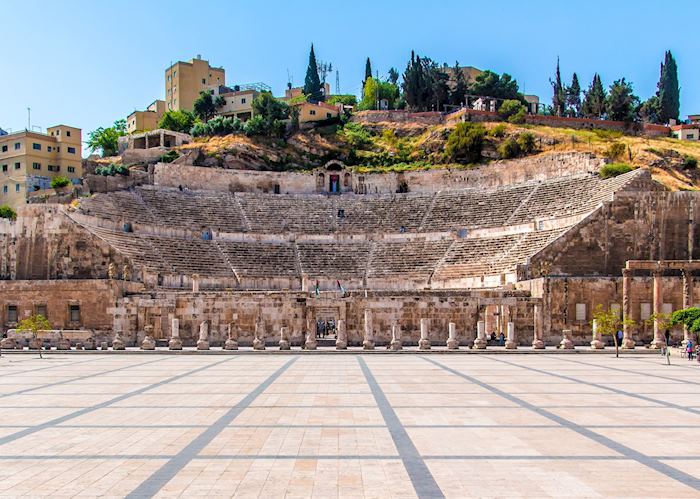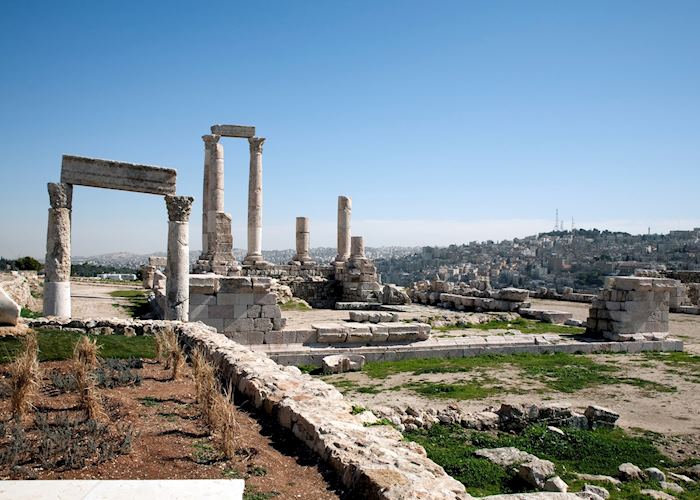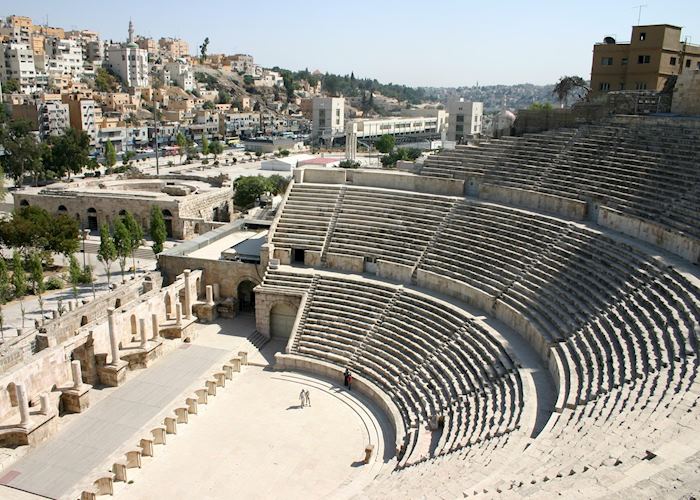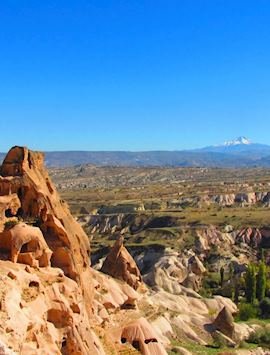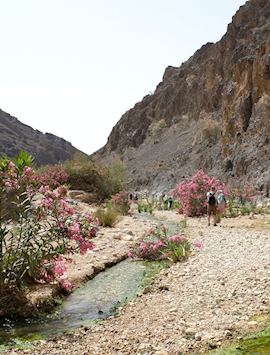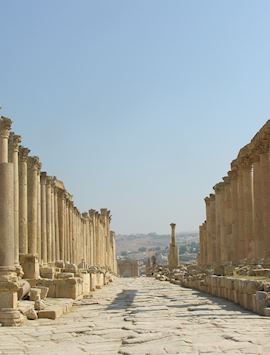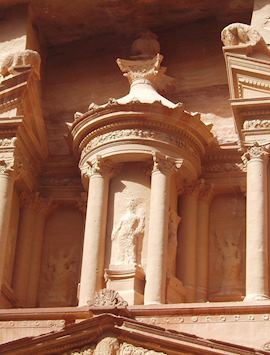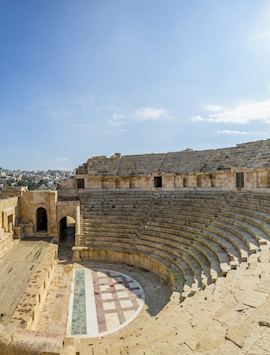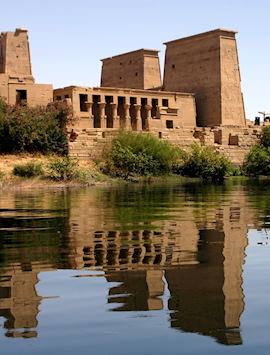The tour of Amman will include the Roman theater, and a visit to the Citadel to get a wonderful view of the city, as well as to visit the ruins there.
The Roman amphitheater is approached along a walkway lined with Roman columns. The banks of seats, capable of accommodating 6,000 people, are split into three tiers. The lowest tier nearest the action was reserved for the nobles, the next up for the military and then the furthest up for the rest of the citizens.
Nearby is the Odeon, a small Roman theater lovingly restored by the Jordanian Department of Antiquities. Overlooking the amphitheater and heart of Amman is the Citadel. The views from up here allow you to get a better grasp of the layout of the city, and the ruins provide a sense of the city's past as well. Ongoing excavations, and the sheer volume of remains in a small area, give the Citadel a slightly cluttered feel.
The best ruins are the Roman and Islamic ones: the three remaining erect pillars of the Roman Temple of Hercules are the most prominent feature on the Citadel hill, whilst nearby are the low walls and columns of a Byzantine church. The path among the ruins terminates at the remains of the Umayyad Palace.
The Jordanian Archaeological Museum also sits atop the Citadel, and is one of the more impressive museums in the city. There are large amounts of pottery, coins, statues and other smaller remains on display from most periods of history, right back to the Paleolithic period. There are one or two exceptional exhibits, including burial sarcophagi, a Roman statue of Daedalus, and the Dead Sea Scrolls.
The citadel is on one of the seven hills on which Amman was built. Standing on this hill when the muezzins call upon the faithful to pray (through speaker systems located on the numerous mosques throughout town and surrounding the Citadel), is a unique and touching experience. Stand still for a moment and listen to the call from the muezzins everywhere around you — there are few better ways to take in the atmosphere of the Middle East.
